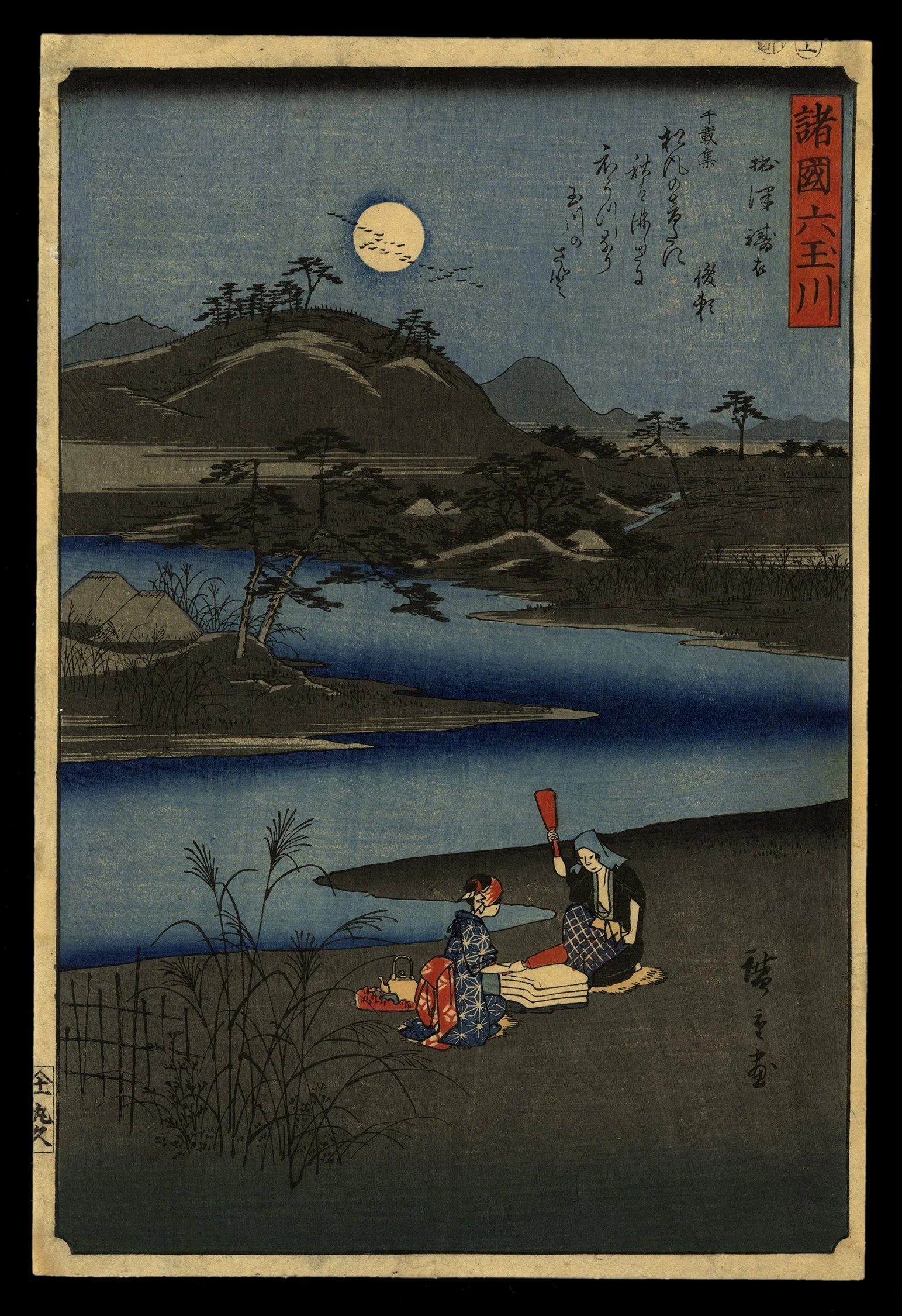<b>SIX JEWEL RIVERS FROM VARIOUS PROVINCES</b> / Ando Hiroshige1857<B>SOLD</B></em>
Six Jewel Rivers from Various Provinces
ARTIST: Ando Hiroshige (1797-1858)
MEDIUM: Woodblock print
DATE: 1857
DIMENSIONS: 14 1/4 x 9 5/8 inches
CONDITION: Excellent; minor trimming to margins, light soiling and staining on reverse
SOLD
Six Jewel Rivers from Various Provinces
ARTIST: Ando Hiroshige (1797-1858)
MEDIUM: Woodblock print
DATE: 1857
DIMENSIONS: 14 1/4 x 9 5/8 inches
CONDITION: Excellent; minor trimming to margins, light soiling and staining on reverse
SOLD
Six Jewel Rivers from Various Provinces
ARTIST: Ando Hiroshige (1797-1858)
MEDIUM: Woodblock print
DATE: 1857
DIMENSIONS: 14 1/4 x 9 5/8 inches
CONDITION: Excellent; minor trimming to margins, light soiling and staining on reverse
SOLD
Details
"The Kinuta (or Toi) River in Settsu Province" from the vertical Shokoku Mu Tama-gawa series stands as a testament to Hiroshige's mastery in capturing the essence of nature and daily life in Edo-period Japan. Published by Marukyo in November 1857, this particular print showcases two girls engaged in the traditional task of pulling cloth beneath the serene gaze of a full moon. The title itself holds a dual significance, as "Toi" not only refers to the location of the river but also signifies the action of beating cloth, aligning perfectly with the scene depicted. Set against the backdrop of the moonlit river, the composition exudes tranquility and elegance, with the figures gracefully enveloped in the soft glow of the moon.
Connoisseur's Note
Each print in the series is imbued with a sense of poetic beauty, accompanied by a poem that celebrates the purity and allure of the six renowned Tamagawa rivers across Japan. This thematic choice reflects the enduring fascination with natural beauty and poetic symbolism in Japanese art. Furthermore, the careful positioning and gestures of the figures in Hiroshige's prints echo those found in handscrolls by Sakai Ōho, illustrating a harmonious blend of artistic influences and traditions. "The Kinuta (or Toi) River" emerges as a standout piece in the series, celebrated for its exquisite composition, evocative imagery, and profound connection to both nature and cultural heritage.
This impression is in an excellent state of preservation with sharp and vivid colors.




